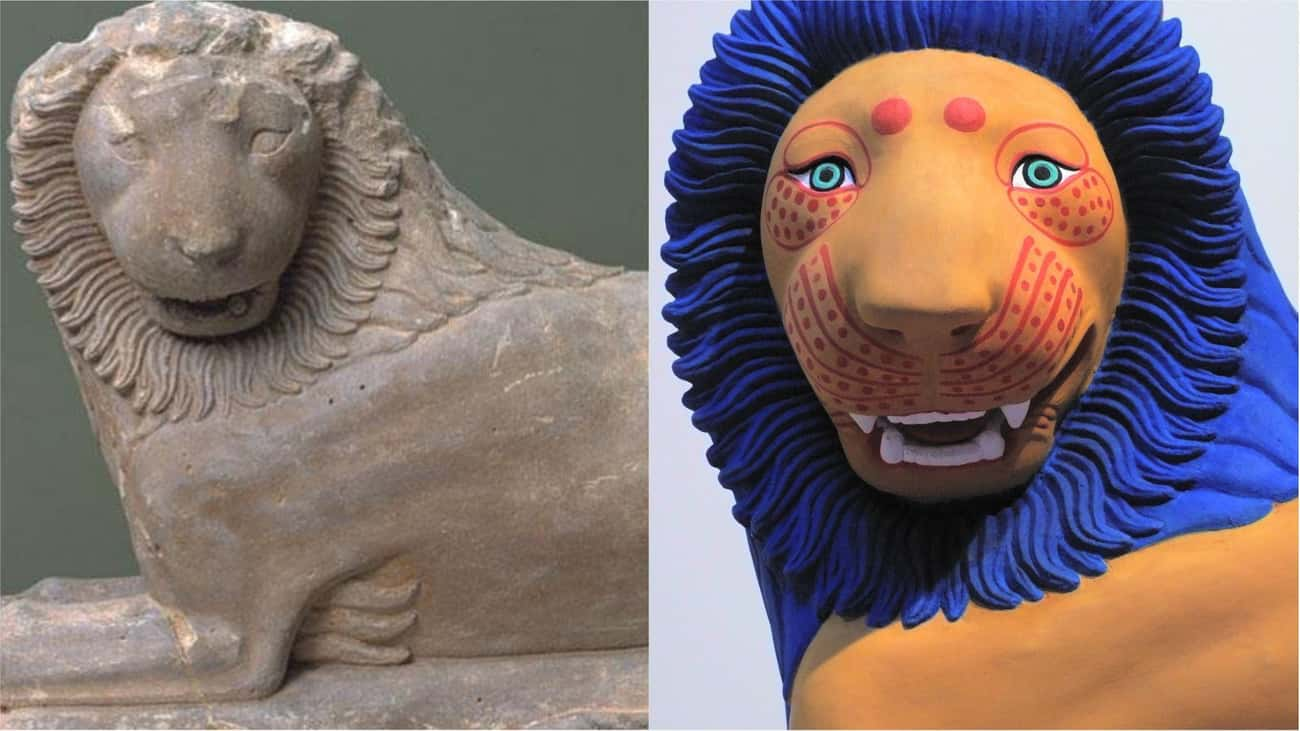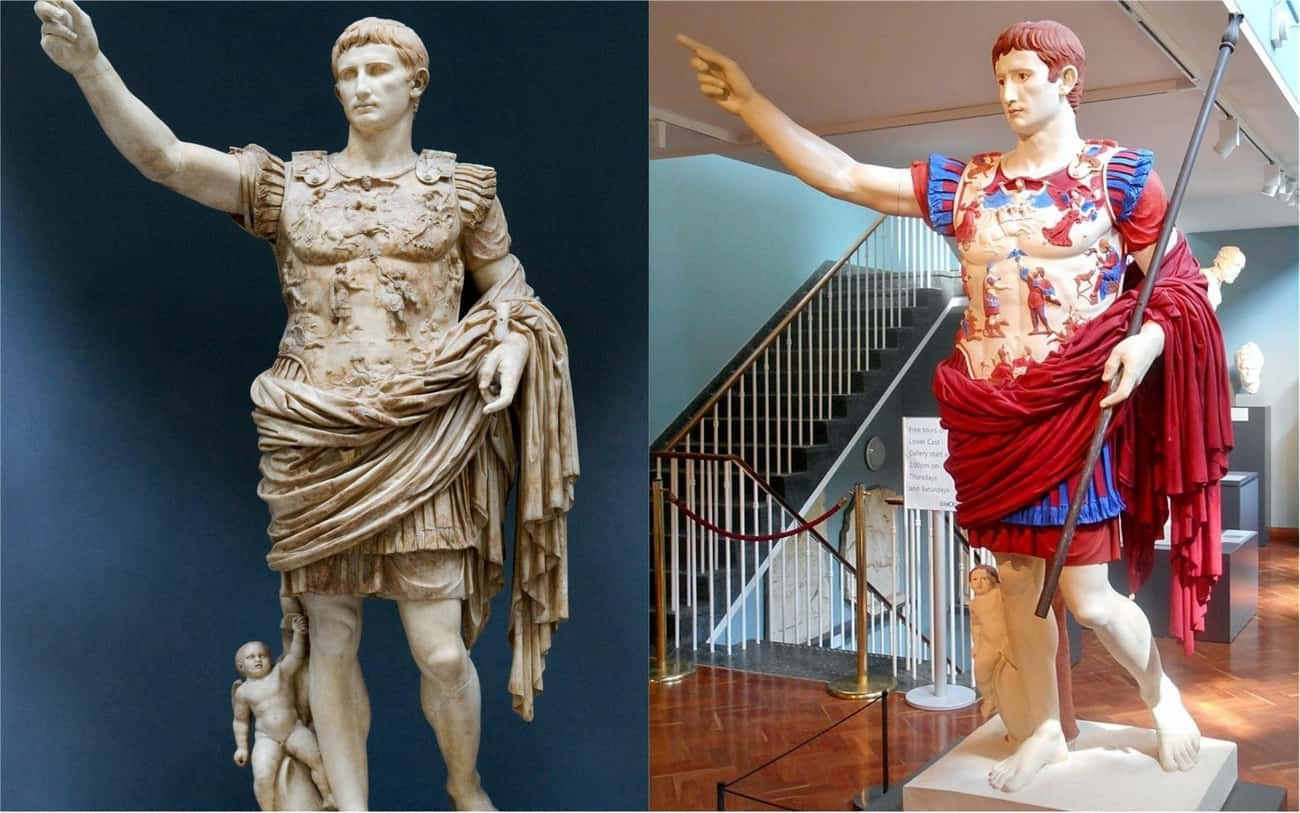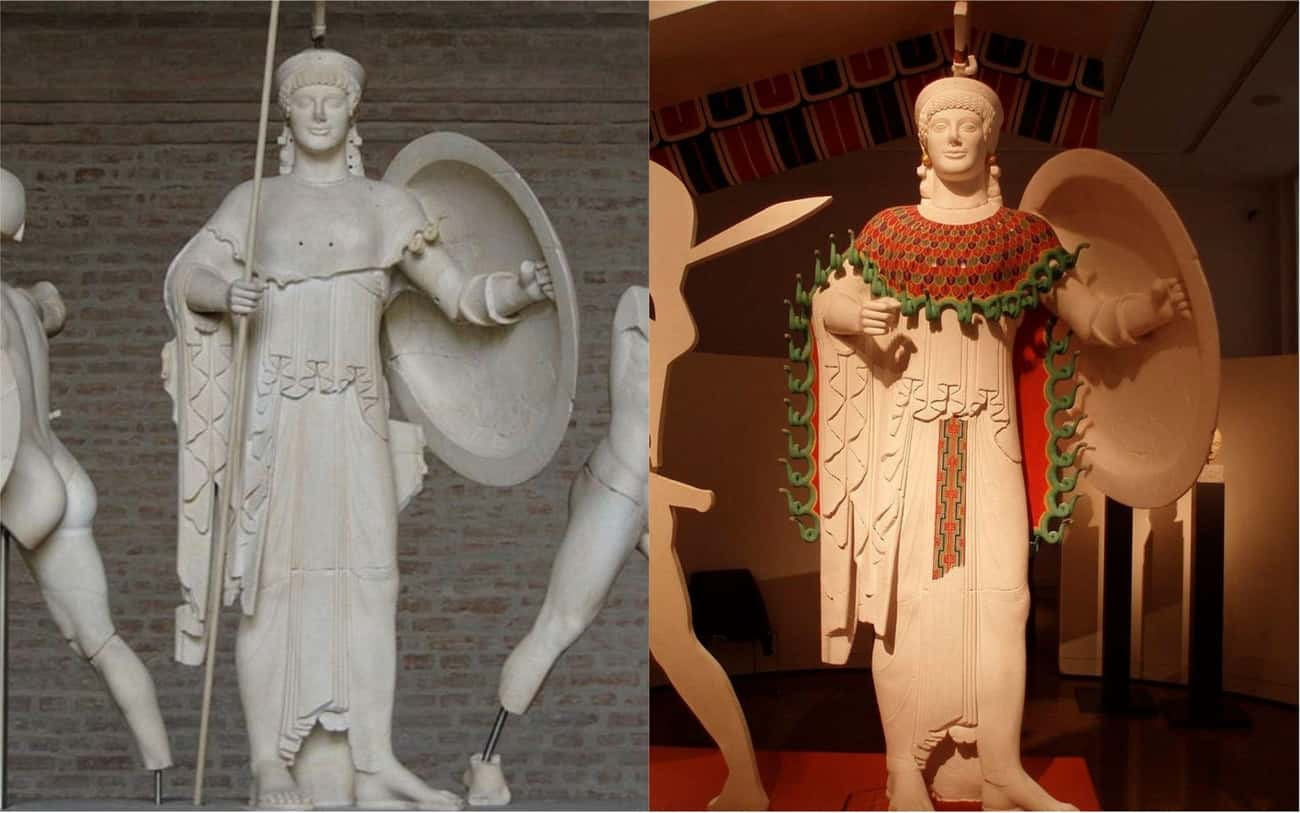To the modern art-history lover, the numerous sculptures that managed to survive the social and political turmoil of Greek and Roman antiquity are skillfully crafted, white marble relics of a time long passed; however, that was not always the case. In fact, ancient Greek and Roman sculptures were actually done in color.
By Kellie Kreiss
The Reproduction Of The “Alexander Sarcophagus," From Around 320 BC, Greece
In their heyday, these awe-inspiring statues, engravings, and even sarcophagi were decorated with vibrant colors and stones. They depicted, in great detail, the world experienced – or at least envisioned – by the artists who designed them. These ancient marble statues have endured thousands of years of erosive destruction, leaving them in their now colorless (and sometimes armless and headless) state. One man, German archaeologist Vinzenz Brinkmann, has set out to change that.
The Reproduction Of The "Peplos Kore" Statue, Circa 530 BC, Athens, Greece
Brinkmann, who specializes in ancient polychromy (or, the reconstruction and repainting of ancient sculptures and engravings), began working on a project in 2009 that would essentially breathe life back into the marble figures that the world had come to believe were always washed-out, unembellished carvings of ancient gods and warriors.
The Reproduction Of The "Stele Of Aristion," Circa 510 BC, Greece
Using "high-intensity lamps, ultraviolet light, cameras, plaster casts, and jars of costly powdered minerals," Brinkmann has been able to successfully scrutinize the chemical residue remaining on the actual statues and determine the components of the paint used to decorate them. As a result, he has rediscovered the original, intensely colorful state of these relics – and duplicated them for a modern audience. As an article in Smithsonian explains,
[Brinkmann] has dramatized his scholarly findings by creating full-scale plaster or marble copies hand-painted in the same mineral and organic pigments used by the ancients: green from malachite, blue from azurite, yellow and ocher from arsenic compounds, red from cinnabar, black from burned bone and vine.
Impressively, this has led to the curation of numerous traveling exhibitions worldwide, most recognizably the Gods in Color exhibition, which aims to document and share the extent of his work. Below, you will find just a few examples of what these already miraculous works of art looked like at the time when the Greeks and Romans were fighting amongst themselves.














